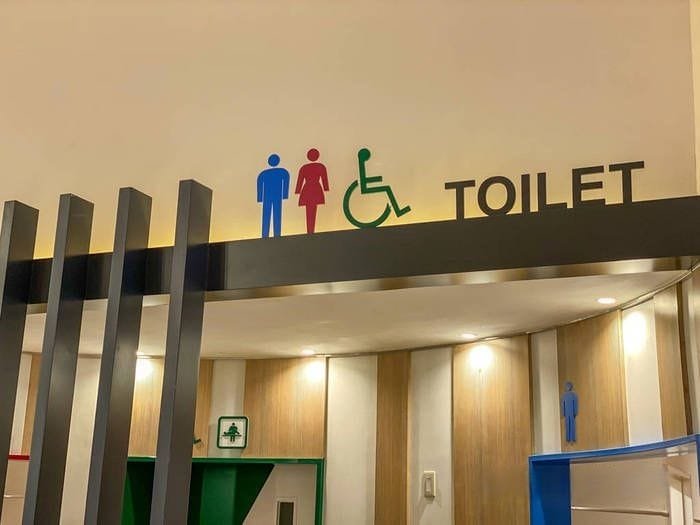
In public places, the choice of toilets not only affects the user experience but also has a direct impact on hygiene conditions and the overall image of the venue. Whether in shopping centers, restaurants, airports, or office buildings, selecting the appropriate toilet requires comprehensive consideration of multiple factors. This article provides valuable advice to help you find the most suitable toilet for public use among the many options available.
1. Importance of Durability
Toilets in public places endure frequent and sometimes rough usage, making durability crucial. It is advisable to choose high-quality materials such as ceramic or stainless steel. These materials not only have high strength and strong impact resistance but also effectively resist corrosion and the accumulation of dirt. Ceramic toilets have a smooth surface, making them easy to clean and maintain, often making them the preferred choice for public spaces.
2. Ease of Cleaning and Maintenance
In public facilities, hygiene management is vital, so it is essential to choose a toilet design that is easy to clean. Consider seamless toilet designs that can effectively prevent the growth of dirt and bacteria, while L-shaped or U-shaped toilets facilitate sanitary cleaning. Regular maintenance and disinfection are also crucial for maintaining hygiene. It is advisable to choose products from reputable brands to ensure better after-sales service and cleaning guidance.
3. Comfort and Human-Centered Design
Although public spaces cater to a large number of users, user comfort should not be overlooked. Selecting ergonomically designed toilets can provide users with a more comfortable experience. For elderly and child users, it is recommended to choose toilets with an appropriate height to avoid inconvenience caused by height disparities. Additionally, the design of the toilet seat should consider the needs of various users, such as wider seats and padding options.
4. Efficient and Water-Saving Flushing Systems
Toilets in public places are often used frequently, making the choice of flushing system critical. Opt for efficient flushing systems, such as dual-flush options, which can ensure effective cleaning while saving water without compromising usability. Additionally, noise control of the flushing system is important; a quiet flushing mechanism can enhance the user experience and create a better environment.
5. Safety Features
Providing a safe environment for users in public restrooms is essential. When selecting toilets, avoid those with sharp edges and slippery surfaces to prevent injuries. Also, ensure that there is adequate space around the toilet to allow for ease of movement and to provide a safer usage space. For users with special needs (such as disabilities), there should be specially designed accessible toilets to ensure their usability.
6. Aesthetic Appeal and Style Compatibility
The appearance of the toilet should not be neglected. When selecting, it is recommended to choose toilets that match the overall decor style of the public space. This not only enhances the overall aesthetic of the venue but also leaves a good first impression on customers. Modern and minimalist toilet designs are typically easier to integrate into various environments, enhancing the venue’s sophistication.
7. Environmentally Friendly Options
With increasing public awareness of environmental issues, more public spaces are focusing on eco-friendly products. Choosing eco-friendly toilets can help reduce water waste and improve the venue’s green image. You can look for certified eco-friendly toilets, which are often made from recyclable materials and offer energy- and water-saving features.
8. Cost and Budget
When selecting toilets for public spaces, price is also an important consideration. While there are low-cost products available on the market, they often lead to frequent repairs or replacements due to quality issues, resulting in higher economic burdens over time. Therefore, it is essential to choose products with high cost performance. Select reputable brands; although the initial investment may be higher, they often provide longer lifespans and better service guarantees.
9. User Experience Research
Finally, user feedback and experience are equally important in the toilet selection process. Before actual procurement, you can gather user needs and opinions through surveys, suggestion boxes, or direct communication with customers to understand their expectations when using toilets. This research can not only inform your purchasing decisions but also significantly enhance customer satisfaction.
Conclusion
Choosing the right toilet for public spaces involves a comprehensive assessment that includes durability, ease of cleaning, comfort, safety, environmental responsibility, and user needs. Through careful selection and planning, you can not only enhance the user experience but also improve the overall image and hygiene standards of public venues. We hope these suggestions help you make informed decisions in finding suitable toilets for public places, ensuring that every customer enjoys a comfortable and convenient experience!
#PublicHygiene #ToiletSelection #HygieneManagement #UserExperience #EcoFriendlyDesign






